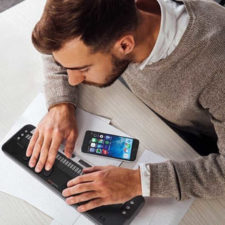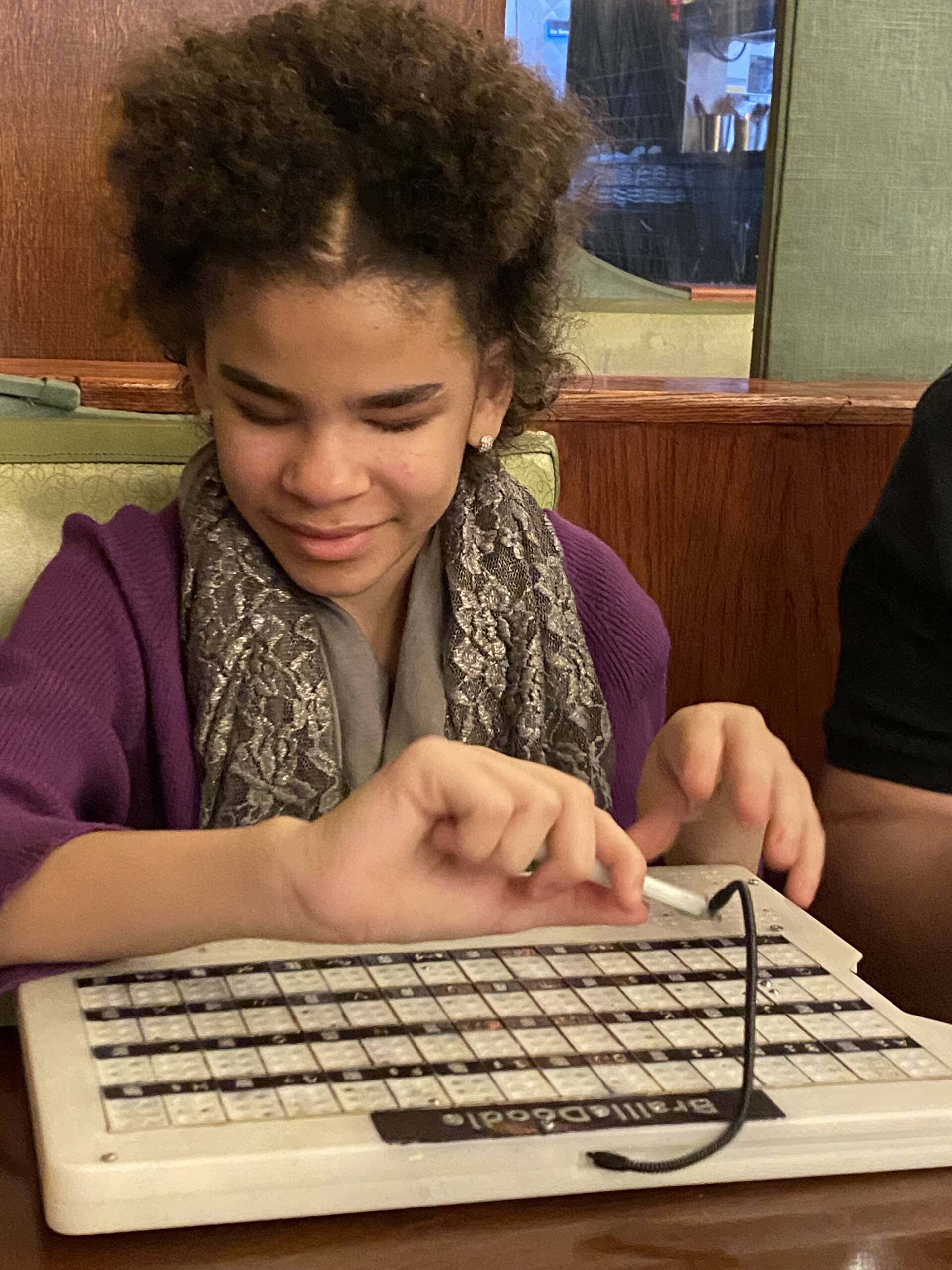AI-Powered Visual Aids: Enhancing Autonomy for Blind Users
AI-Powered Visual Aids: Enhancing Autonomy for Blind Users
Blog Article
Empowering Independence With Assistive Innovation for the Blind
The assimilation of assistive innovation right into the lives of individuals with aesthetic impairments represents a considerable innovation in promoting self-reliance and self-sufficiency. From innovative display readers to sophisticated clever walking canes, these tools not only enhance day-to-day navigating and communication yet additionally equip individuals to involve meaningfully in different facets of life. As we explore the myriad benefits and real-world applications of these modern technologies, it ends up being critical to analyze the hidden aspects that contribute to their performance and the possibility for future advancements in this important field.
Review of Assistive Technology

The development of assistive technology is grounded in principles of inclusivity and empowerment. Technologies in software, equipment, and sensory improvements supply customers with options tailored to their details demands. From display readers that convert text to speech, to responsive devices that share information through touch, these tools transform the method individuals engage with their surroundings.
In enhancement to useful applications, assistive modern technology promotes better social incorporation and engagement in various fields, consisting of education and employment (Mobility aids for visually impaired users). As research and advancement continue to advance, the potential for assistive modern technology to additionally improve the lives of visually damaged people stays promising, leading the method for an extra equitable culture where every person can grow
Kinds Of Assistive Devices
A range of assistive tools have emerged to sustain individuals with aesthetic impairments, each designed to satisfy specific requirements and improve everyday performance. These tools range from low-tech remedies to high-tech developments, supplying varied alternatives for customers.
Low-tech gadgets consist of magnifiers and large-print materials that help in reading and writing. Braille devices, such as Braille styluses and slates, enable tactile reading and interaction. Positioning and flexibility aids, like white walking sticks, assist individuals browse their environment securely.
On the higher end of the spectrum, electronic zoom systems and display viewers use significant assistance. Electronic magnifiers allow individuals to expand message and pictures on screens, while display readers transform electronic web content into synthesized speech, assisting in access to details on mobile phones and computer systems.
Smartphone applications likewise play an important role, supplying attributes like message recognition and navigating aid. Wearable modern technology, such as smart glasses outfitted with augmented truth, is emerging as an encouraging device to enhance situational recognition.
Benefits of Assistive Modern Technology
The integration of assistive modern technology significantly boosts the high quality of life for people with visual problems. These modern technologies encourage customers by advertising self-reliance, allowing them to browse their atmospheres better and perform everyday tasks with better ease. As an example, display viewers and magnifying software allow people to gain access to digital info, promoting specialist and instructional possibilities that may have previously been out of reach.
In addition, assistive gadgets such as clever walking canes and general practitioners applications give real-time navigating assistance, enhancing mobility and security. This enhanced freedom not only improves self-confidence however also encourages social involvement, permitting users to participate even more completely in their neighborhoods.
Assistive technology likewise facilitates communication, assisting users attach with others with voice recognition and text-to-speech applications. This capability is important for keeping partnerships and accessing essential info.
Additionally, the customization alternatives available with numerous assistive technologies make sure that users can tailor gadgets to their certain requirements, better improving use and performance. Generally, the advantages of assistive technology for people with aesthetic disabilities are extensive, advertising a more comprehensive society where everyone can seek their objectives and goals.
Case Researches and Success Stories
Highlighting the transformative impact of assistive technology, many study illustrate just how people with visual disabilities have successfully integrated these devices into their day-to-days live. One compelling instance includes an university student who utilized display reading software application to navigate online sources and scholastic materials efficiently. This innovation not just promoted her education yet additionally enhanced her confidence in taking part in discussions and group jobs.
An additional case study features a professional that employs a smartphone application designed for navigating and things recognition. By utilizing this app, he click this has actually restored freedom in both his individual and work environments, enabling him to commute individually and involve with coworkers better.
In addition, a retiree shared her experience with braille e-readers, which enabled her to access a large selection of literary works and stay gotten in touch with her neighborhood via book clubs.
These success tales emphasize the important duty of assistive modern technology in promoting self-reliance, enhancing top quality of life, and promoting social assimilation for people with visual impairments (Smart glasses for the visually impaired). By welcoming these ingenious devices, users can overcome difficulties and confiscate chances that add to their individual and professional satisfaction

Future Fads in Assistive Innovation
Innovation in assistive technology is positioned to redefine the landscape of support for individuals with visual impairments. Emerging trends highlight the assimilation of fabricated knowledge (AI) and artificial intelligence, which improve the capability of tools that help with navigation and info ease of access. AI-driven applications are now capable of analyzing aesthetic information in real-time, making it possible for users to engage with their environment a lot more separately.
Additionally, the advancement of wearable technology is advancing quickly. Smart glasses furnished with augmented truth (AR) can give audio descriptions of environments, changing exactly how users connect with public areas. These devices not only advertise freedom but additionally foster social inclusion.
Additionally, the Net of Things (IoT) is making homes smarter, permitting seamless connection in between everyday home appliances and assistive tools. This connectivity equips individuals by allowing automated feedbacks and voice-activated controls customized to private requirements.
Verdict
To conclude, assistive modern technology plays a crucial role in encouraging individuals with aesthetic impairments by boosting their independence and involvement with their surroundings. The varied array of applications and tools offered not just promotes navigating and communication however likewise advertises social assimilation and chances for individual and expert growth. As developments proceed in this field, the possibility for improving the lifestyle for those with aesthetic disabilities will broaden, fostering better freedom and empowerment.

Report this page